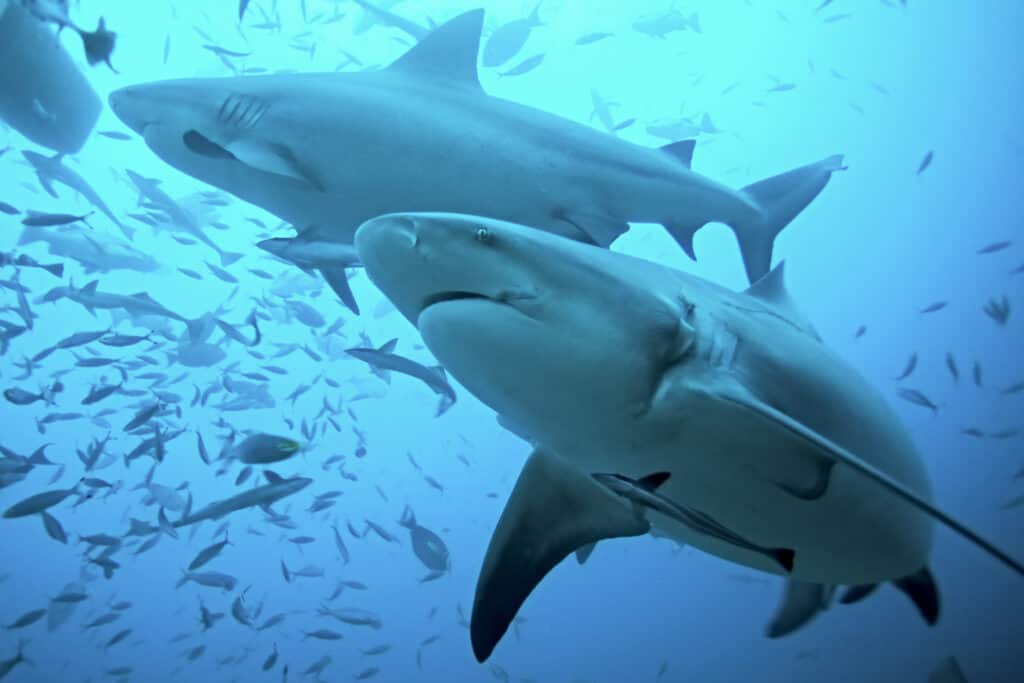
Bull sharks are aggressive animals.
©Martin Prochazkacz/Shutterstock.com
Testosterone is an androgen present in most vertebrate species. Androgen is a steroid hormone that the body uses to manage the characteristics of the male. The steroid hormone is a key element in the reproduction process. It also determines the animal’s muscle mass and fat distribution. Testosterone plays a role in the production of red blood cells. In females, this steroid regulates fertility.
Testosterone is one of the primary factors causing aggressive behavior. The higher the steroid hormone levels, the more aggressive the animal is. This is why many animals fight with other male animals during their mating season.
Testosterone levels in animals fluctuate. During the breeding season, the males of the species will have a higher testosterone level than normal. Animals with high levels of testosterone are usually predatory. The hormone is found in fish, birds, and land-dwelling animals.
Let’s discover which animals have the highest testosterone levels during mating season.
10. Bulls
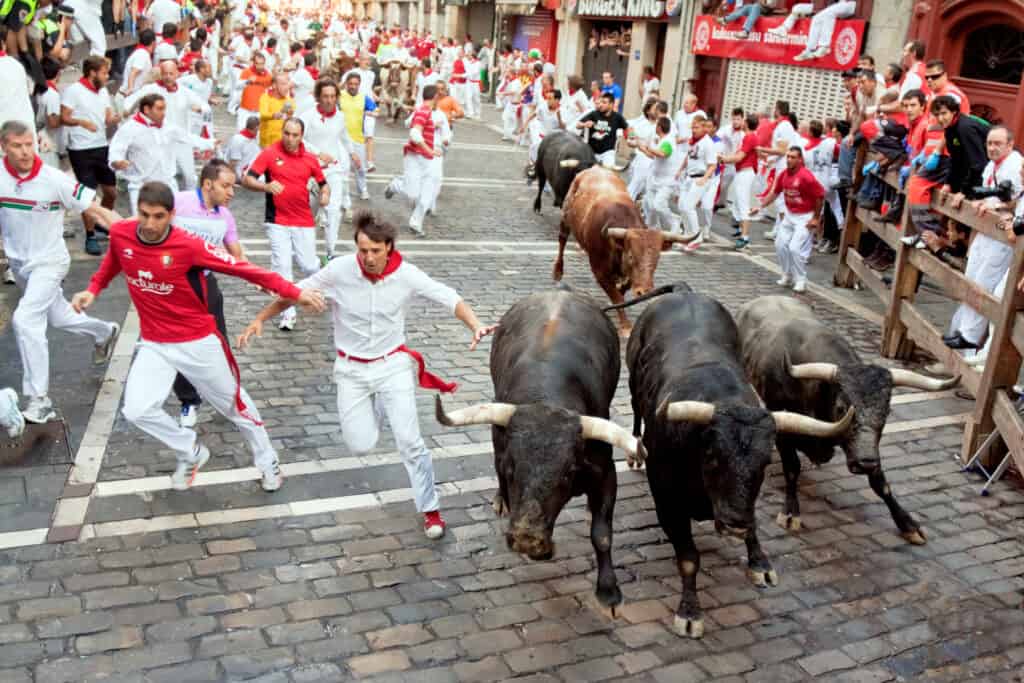
The tenth animal with high levels of testosterone is a bull.
©Migel/Shutterstock.com
Bulls have bad reputations for being mean and aggressive. Anyone who has spent time around these animals will attest to the fact that they can get mean, and they will chase other animals, humans, and other bulls. They can be unpredictable. Their testosterone levels are low compared to many animals on this list, so it might be that bulls are mean without the steroid hormone influence. The average bull testosterone level is 2.7 ng/ml during mating season.
It might surprise you that dairy bulls show more aggression than bulls raised for beef. The dairy bulls are larger and more muscular than the beef bulls. When a bull becomes aggressive toward another bull, they can injure their opponent with their horns. They are also known to mount the other bulls and cause serious injury and death to them.
9. Asian Elephant
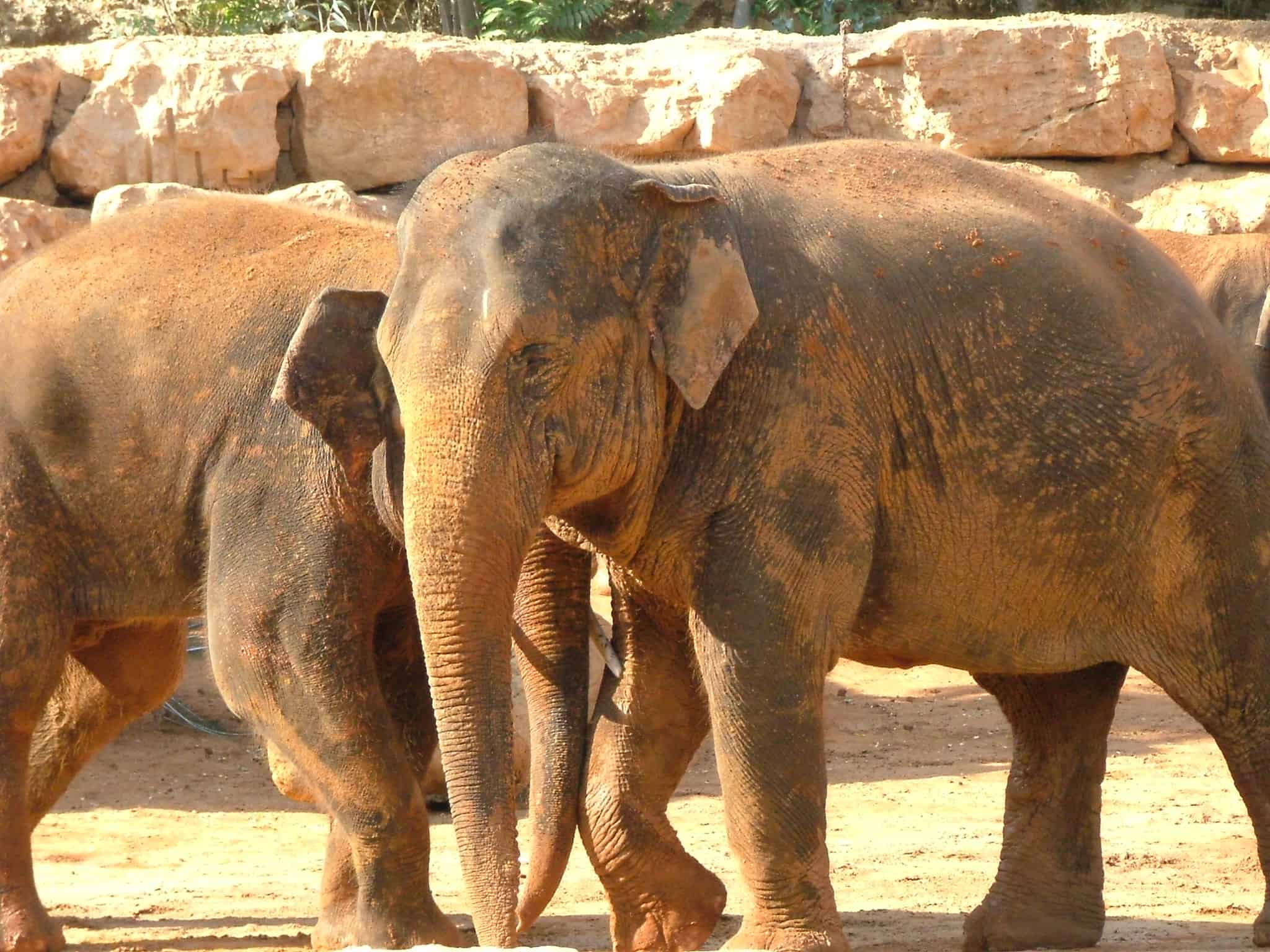
Asian
elephants
have lower testosterone levels than those of African elephants.
©SuperJew, CC BY-SA 3.0, via Wikimedia Commons – Original / License
Asian elephants are smaller than African elephants. The Asian elephant is between 6 and 12 feet tall at the shoulders and weighs between 6,000 and 12,000 pounds. This species has a lower testosterone level compared to African elephants. Their levels reach 5.35 ng/mL during mating season.
The mating season for Asian elephants corresponds with the rainy season. In the first half of the rainy season, the bull elephants become more aggressive and seek the cows out. The females do not start their estrous cycle until the second half of the rainy season.
8. Bears

Grizzly bears are the most aggressive bears. Their testosterone levels reach 15.3 ng/ml during their breeding season. Their mating season runs from May until July but reaches its peak in the middle of June. During this time, the bears are more aggressive toward the same sex. At other times, the bears are equally aggressive toward the opposite text.
Bears that live closer to the coast were found to be more aggressive than the ones that live further inland. Grizzly bears have increased testosterone levels during the spawning season of salmon. At this time, the bears become more aggressive as they. defend their territory and food source.
7. Tigers

The seventh animal to make the list of animals with high testosterone levels is the
tiger
.
©Thinker360/iStock / Getty Images Plus via Getty Images
Tigers are the largest of the big cats. These cats have greater muscle mass than the other big cats. They also have higher testosterone levels. Testosterone levels as high as 17.60 pg/mL have been recorded in these big cats during their mating season. Their mating season runs from November to April.
They are solitary animals who move silently while hunting, and they can jump higher than most other big cats. They are not aggressive toward other animals and males of their species unless they are in the mating season or protecting their food.
6. Lions
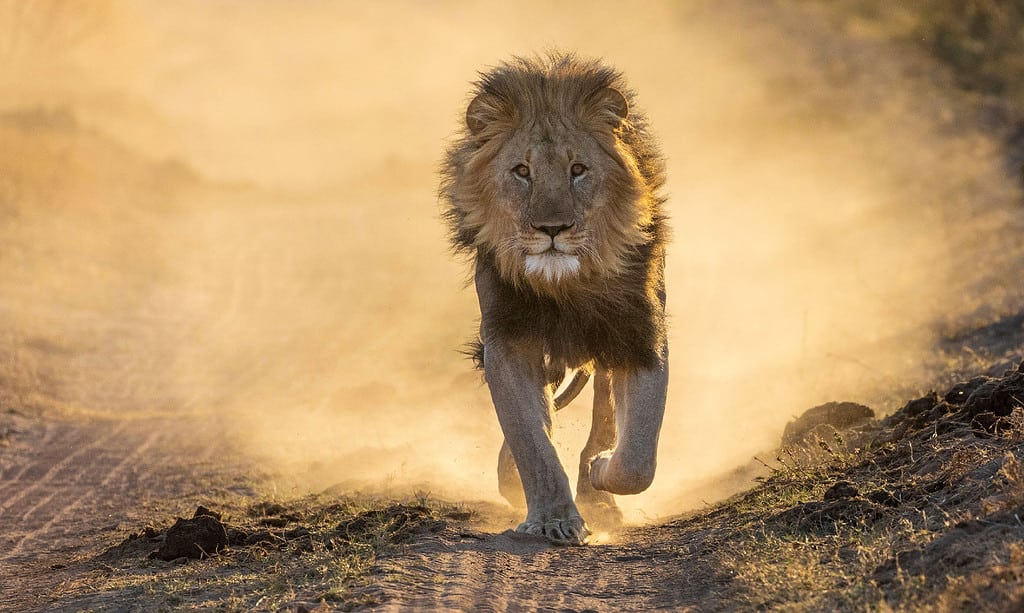
Lions’ testosterone levels are consistent whether or not they are in mating season.
©iStock.com/Wirestock
The lion is known as the king of beasts. Their testosterone levels are different from those of most animals because lions do not have a specific breeding season. They breed after taking over a pride, and male lions are so aggressive that they will kill any female that refuses to mate with them. Their testosterone levels are around 25.00 pg/ml, and they do not fluctuate when their mating times are over.
Male lions are aggressive with other male lions to show who is dominant. They often form coalitions of male lions after they are forced to leave their birth pride. These lions can be unpredictable and aggressive toward other species of animals.
5. Dusky Salamander
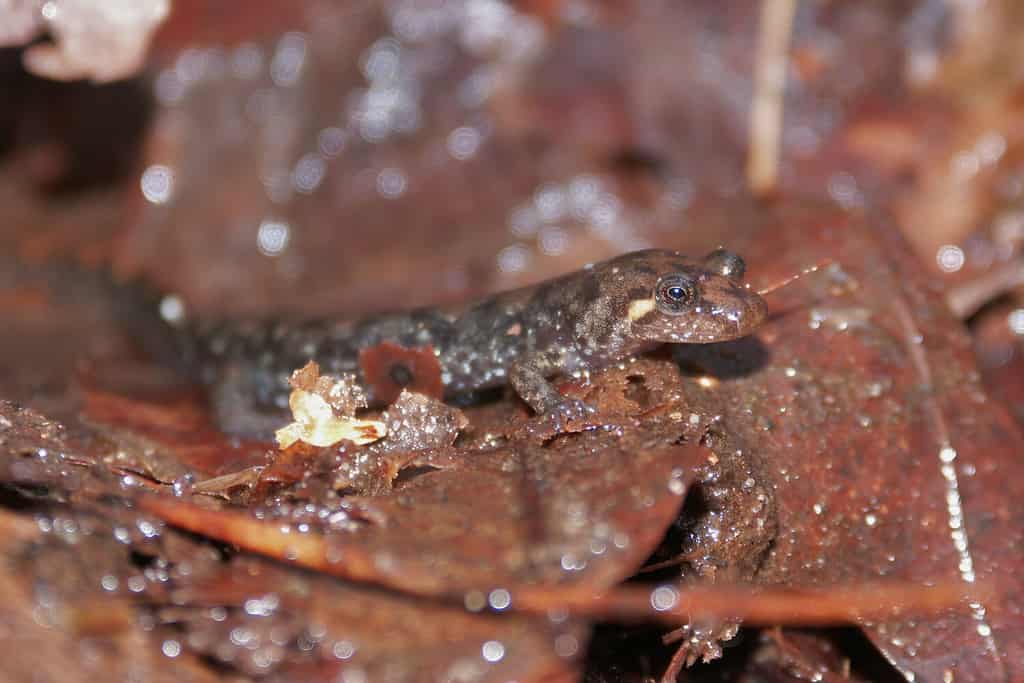
The dusky salamander is highly territorial during mating season.
©HWall/Shutterstock.com
Dusky salamanders mate in both the spring and the fall. This is when their testosterone levels are the highest. The testosterone level of a dusky salamander is 58.50 ng/ml during the mating season. The males become territorial when their testosterone levels rise, and they attack all habitat intruders.
Dusky salamanders do not have lungs. They absorb oxygen through their skin. They grow to 5 inches in length. The skin on these salamanders is mildly toxic as a defense against predators.
4. African Elephant
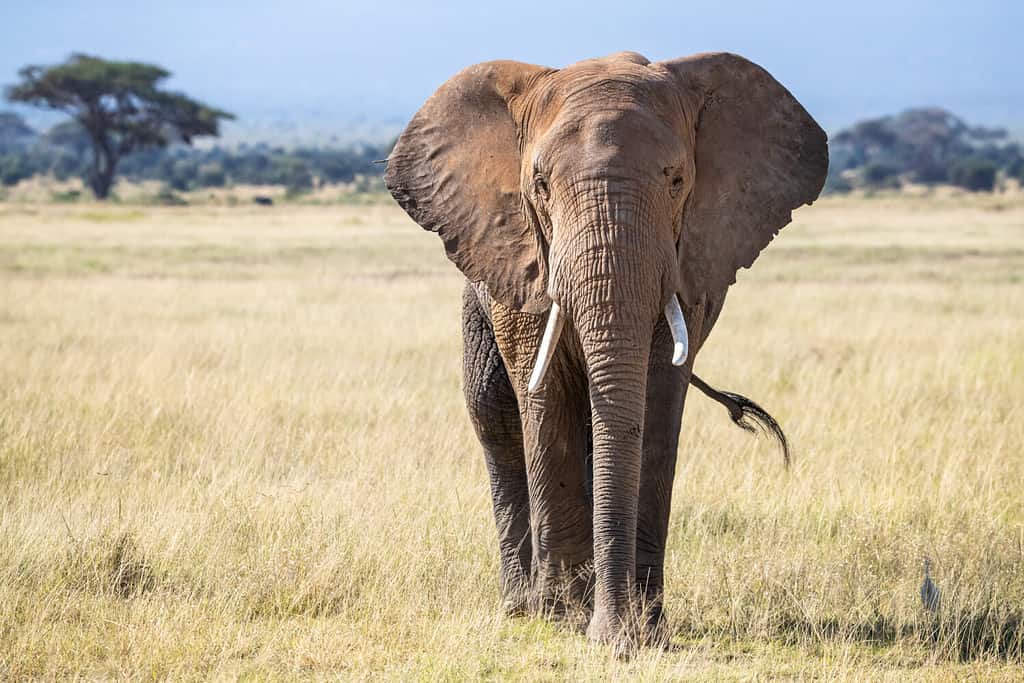
African elephants become agitated and will fight during mating season.
©Jane Rix/Shutterstock.com
These elephants have testosterone levels of 64.4 ng/ml during their mating season. They are generally peaceful animals, but during their mating season, or season of musth, like other animals with high testosterone levels, the African elephant becomes agitated and ready to fight when their hormone levels increase.
Musth lasts from December until March for African elephants. This species of elephant is between 8.2 and 13 feet at its shoulder. They weigh between 5,000 and 14,000 pounds. They are intimidating and capable of doing significant damage to an opponent.
3. Rainbow Trout
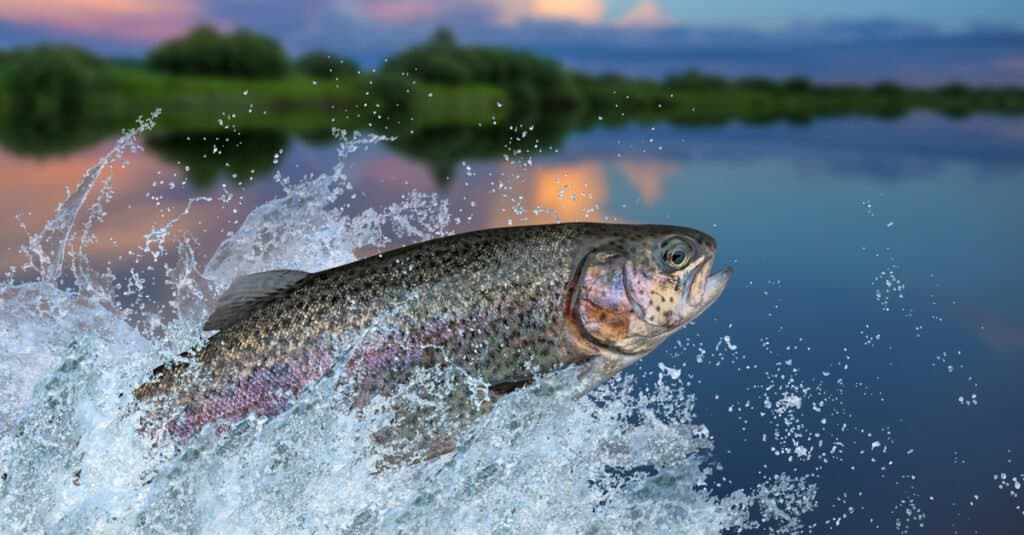
The rainbow trout’s testosterone level drops from 70 ng/ml to 3 ng/ml after spawning season.
©FedBul/Shutterstock.com
Rainbow trout are among the group of animals with high testosterone levels. During the mating or spawning season of the rainbow trout, their testosterone levels reach 70 ng/mL. Their spawning season occurs from January until June. The rest of the year, their testosterone levels drop to 3 ng/mL.
This trout species can reach weights of 43 pounds if they have access to the sea. They grow to lengths as great as 20 inches. Males are very aggressive toward other males of their species and other fish species during the height of their testosterone levels.
2. Marbled Salamander
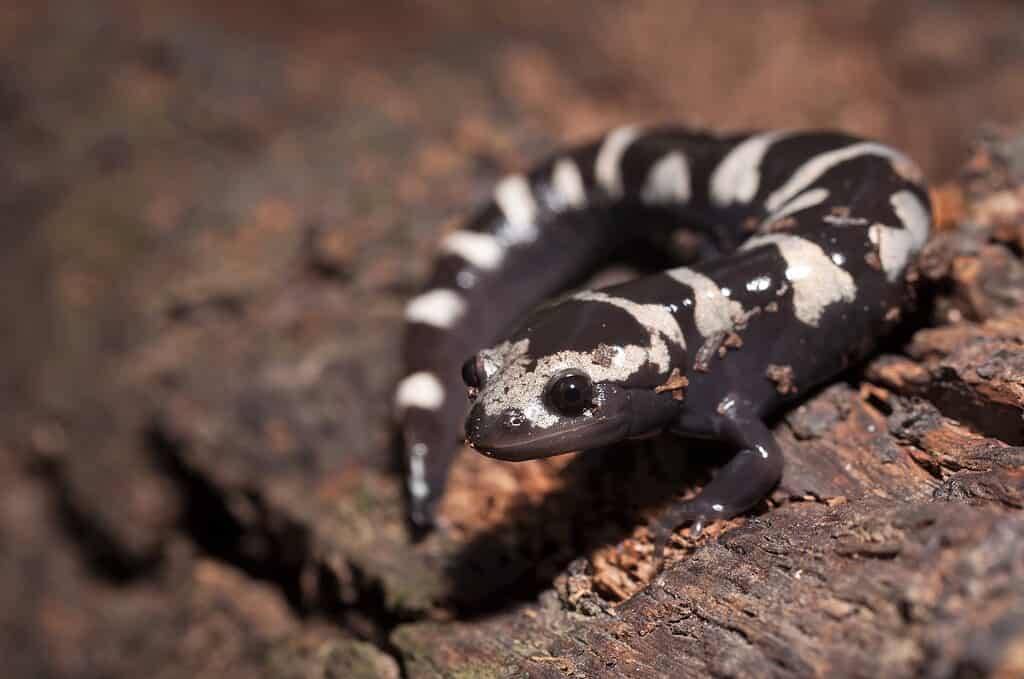
The marbled salamanders have high hormone levels, ranking them second on our list.
©Mike Wilhelm/Shutterstock.com
Marbled salamanders are animals with high testosterone levels for their size. They have testosterone levels of 7830 ng/ml during their mating season. During other times, their testosterone levels are 500 ng/ml. The marbled salamander mating season occurs in the fall. This is unique because most salamanders mate during the winter.
Another thing that sets the marbled salamander apart from the other species is that it breeds on land and not in water. They are between 3 and 4.5 inches in length as adults. They are solitary animals that live in moist areas and deciduous woodlands.
1. Bull Shark

The animal with the highest levels of testosterone during mating season is the bull shark.
©Carlos Grillo/Shutterstock.com
Bull sharks have high levels of testosterone. Their levels are 358 ng/ml (nanograms per milliliter). Aggressive behavior toward other animals, and even humans, is one of the trademark characteristics of this shark species. They are unpredictable and will attack for no apparent reason.
Shark testosterone levels are highest in the spring for both tiger and bull sharks. This coincides with their natural mating season. Bull sharks usually hunt alone. They are agile and can swim fast, even in shallow waters.
Summary of Animals with Highest Levels of Testosterone
| Animal | Testosterone Levels at Their Highest | |
|---|---|---|
| 1 | Bull Shark | 358 ng/ml during mating season |
| 2 | Marbled Salamander | 73.80 ng/ml during mating season |
| 3 | Rainbow Trout | 70 ng/ml during mating season |
| 4 | African Elephant | 64.4 ng/ml during mating season |
| 5 | Dusky Salamander | 58,50 ng/ml during mating season |
| 6 | Lions | 25.00 ng/ml during mating season |
| 7 | Tiger | 17.60 pg/mL during mating season |
| 8 | Bears | 15.3 ng/ml during mating season |
| 9 | Asian Elephants | 5.35 ng/ml during mating season |
| 10 | Bulls | 2.7 ng/ml during mating season |
Thank you for reading! Have some feedback for us? Contact the AZ Animals editorial team.








